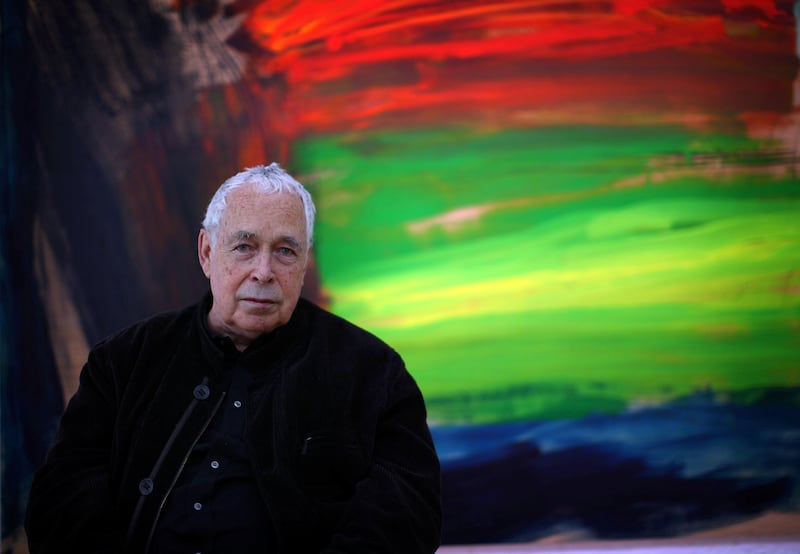On Tuesday, Sotheby's will host an auction in London that will afford visitors and bidders a glimpse into the very private and intimate world of one the greatest artists of the late 20th century.
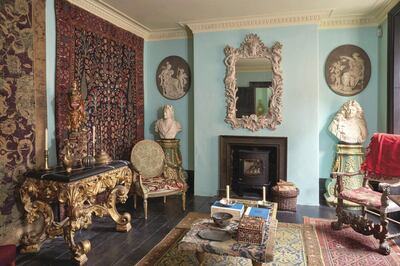
Howard Hodgkin died on March 9 at the age of 84, and like Henri Matisse, Yves Saint Laurent and Sol LeWitt before him, he not only left behind a vast body of work, but also a profoundly personal cabinet of curiosities that attests to his status as one of the great artist-collectors, a passionate connoisseur whose possessions reflected his interests, as well as served as his inspiration and muse. “There are moments in people’s lives when the desire to possess works of art takes possession of them, and that is of course where – as an almost registered sufferer – I know all about it,” the painter admitted in the 1980s.
A contemporary of David Hockney, Allen Jones, Peter Blake and John Hoyland, Hodgkin came of age in the late 1950s and early 1960s – he shared his first show with Jones at London’s ICA Gallery in 1962 – but by the time he had his first retrospective at the Museum of Modern Art in Oxford in 1976, Hodgkin was better known in the art world as a collector than as a painter.
As a child, Hodgkin had grown up surrounded by objects, thanks to the prodigious collection formed by his great-grandparents. An account of the eclectic acquisitions and assemblages of largely English antiques was published by John Eliot Hodgkin in 1900, in three volumes called Rariora, listing "things wondrous, rare and strange".
In the 1970s, Hodgkin supplemented his income as an artist and art teacher by trading in antiques, especially frames. As a lifelong pedestrian, he would often hitchhike around the country in pursuit of rare examples.
It was a quest that continued throughout Hodgkin’s life. Frames came to play a significant role in his paintings, which were always executed on wood and boards, never on canvas. When he travelled, he would often look for frames to take home with him, incorporating them in paintings of the place or trip from which they originated. Despite this, and his lifelong love of objects associated with South India and Central Asia – Hodgkin first visited India in 1964 and then returned almost annually – his approach to collecting was emphatically not one of a traveller in search of souvenirs.
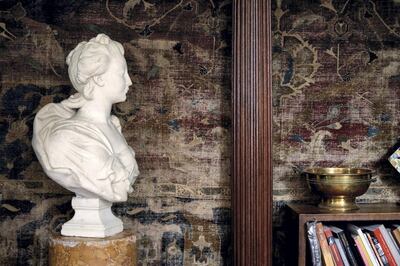
"I particularly don't like objects of sentiment: people who have things not because they like and admire them, but because they have associations. You should have what you want, what you like, around you," the painter told World of Interiors's Mirabel Cecil in 1989. "Things have to be acquired out of necessity, as well as passion."
Those passions were evident from the items Hodgkin assembled in his central London home, a modest-looking house in Bloomsbury where the painter lived for more than 30 years, and from the outside offered no clues of the treasures contained within: French Aubusson tapestries and rare carpets from Khorasan, Indian miniatures, Ottoman candlesticks, relief panels and his particular passion, tiles.
It was Hodgkin’s art master at Eton, Wilfrid Blunt – the art historian Anthony Blunt’s brother – who first introduced him to non-western art and who inspired him to collect his first examples of Indian painting, which became the focus of Hodgkin’s passion.
“I think of collecting as a sort of virus really, and I was infected … It is an addiction,” said the painter, who was known to keep auction catalogues and a tape measure by his bedside, ready in case a potential new acquisition might delight and capture his eye.
“‘It’s all grist to the mill,’ Howard insisted ... he collected in order to create new work. What he acquired fed into his work,” Hodgkin’s partner, Antony Peattie, explains in the 351-page catalogue that accompanies Sotheby’s 453-lot sale.
Much of that work was executed in the studio that was connected to Hodgkin’s house, but whose appearance could not have been more different. Whereas the building’s domestic interiors were festooned with objects and finished in colours such as a particular shade of pale blue-green, which Hodgkin referred to as “Indian vernacular”, his studio was a classic example of a modernist white cube, albeit one converted from a 19th-century dairy.
The contrast between Hodgkin’s home and studio is instructive. Glass-roofed, white-walled and lit only by natural daylight, the artist’s studio was furnished only with comfortable chairs, painting equipment and large canvasses that were constructed solely for the purpose of concealing works in progress, some of which were literally years in the making.
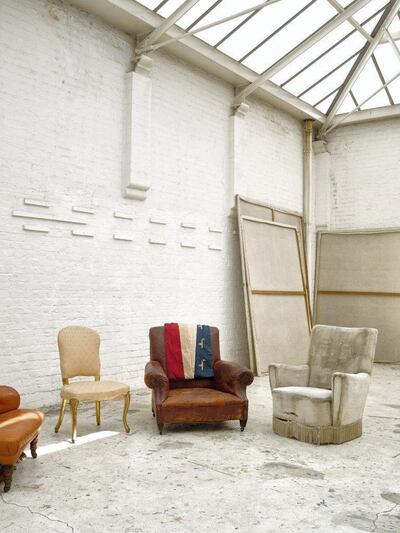
As Peattie explained, as Hodgkin grew older, so his work was conducted increasingly in his mind and through observation. Paintings were left facing the studio wall and only turned around at moments of inspiration, by which time their compositions and strokes had already been envisaged, enabling the painter to execute the swift, confident brushstrokes that were to become such a defining feature of his later work.
Hodgkin always insisted that painting was a torturous and solitary experience, which only became easier at the very end of his life, whereas collecting was quite the opposite. “Painting in a studio is naturally a lonely occupation,” he said. “Collecting, on the other hand, brings with it an almost automatic series of introductions, social contacts, with dealers, scholars and occasionally with fellow collectors.”
For Hodgkin, those collection-based friendships not only included people who became fans and collectors of his work, such as the novelist Julian Barnes and the poet Seamus Heaney, but also people whose work he collected, such as Patrick Caulfield, whom Hodgkin once described as "the closest I ever came to having a painter-colleague", and Bhupen Khakhar, whose De-Luxe Tailors (1972) promises to be one of the star lots in the forthcoming sale.
Hodgkin became friends with the collector Robert Erskine and through him, the network of Parisian dealers, including Charles “Uncle Charlie” Ratton. Robert Skelton, then assistant keeper at the V&A, also became a lifelong friend, who introduced him to other connoisseurs and collectors, such as Milo C Beach and Stuart Cary Welch, and filmmaker James Ivory, another famous collector of Indian miniatures whose career, like Hodgkin’s, was also transformed by visits to the Indian subcontinent.
According to Hodgkin’s wishes, the proceeds from various lots in the forthcoming auction will be donated to charities such as the Whitechapel Gallery education programme, the Monteverdi Choir and Orchestra, and the Modern Art Museum of Fort Worth, Texas.
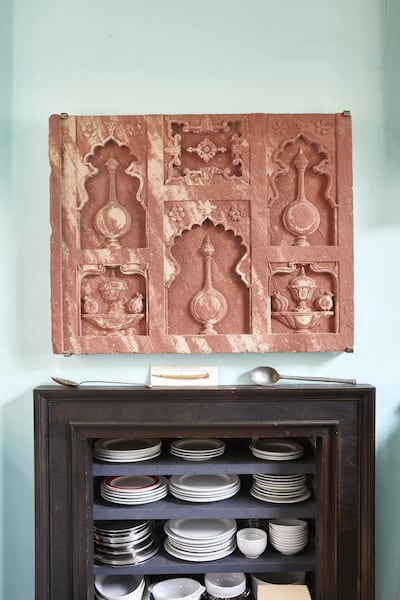
“Howard liked the idea of a sale after his death. The objects have served their purpose to him, they were what he called his ‘must-haves’ that, in some mysterious way, fed his work,” Peattie explains.
“The sale represents a personal portrait of Howard. And it will enable his executors to fulfil his wishes.”
Howard Hodgkin: Portrait of the Artist is on display at Sotheby's, London, with the auction to take place on Tuesday. Howard Hodgkin: India on Paper runs at the Victoria Art Gallery, Bath, until January 7; for more, see www.victoriagal.org.uk/events
_______________
Read more:
[ The Nou Project: Female Arab design duo launches a unisex trainer brand aimed at art aficionados ]
[ Get your jewellery valuated for free from a Sotheby’s gemstone specialist in Dubai ]
[ Grenfell art auction raises almost Dh9.2 million for survivors ]
_______________
